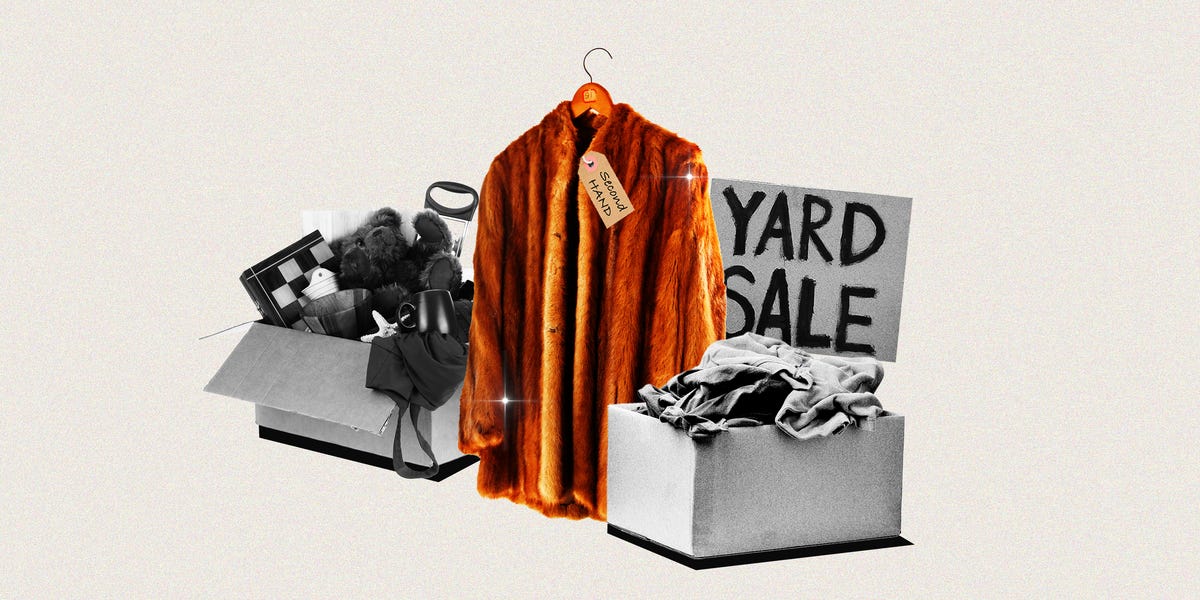
Economic uncertainty, fueled by tariffs and the looming threat of a recession, is driving a significant shift in consumer behavior. Americans, feeling the pinch in their wallets, are increasingly turning to the secondhand market, embracing platforms like Goodwill, eBay, ThredUp, and Poshmark as a means of acquiring goods while managing their budgets. This surge in secondhand shopping represents more than just a cost-cutting measure; it reflects a growing awareness of the environmental benefits and the unique thrill of the hunt for hidden treasures.
The secondhand market offers a fascinating paradox. While the inherent unpredictability can be frustrating – a “miss” scenario often yielding disappointing results – the potential rewards are immense. A successful “hit” can yield a delightfully low-priced treasure, offering both cost savings and the unique satisfaction of owning something one-of-a-kind. Furthermore, this form of consumption aligns with a growing focus on sustainability, reducing waste and the environmental impact of new production. The appeal is multifaceted, addressing financial concerns alongside ethical and environmental considerations.
The appeal of secondhand shopping isn’t limited to any single demographic. From budget-conscious families to environmentally conscious millennials, the secondhand market is proving its versatility. Online platforms like eBay and Poshmark offer a vast and constantly evolving inventory, allowing shoppers to browse from the comfort of their homes. Meanwhile, brick-and-mortar stores like Goodwill provide a more tactile experience, offering the chance to discover unexpected finds while supporting charitable causes. This diversity of options caters to a broad spectrum of shopping preferences and budgets, further contributing to the market’s explosive growth.
The increased popularity of secondhand shopping also speaks to a broader shift in consumer values. There’s a growing appreciation for uniqueness and authenticity. Secondhand items often carry a story, a history, a unique patina that mass-produced goods simply can’t replicate. This adds an element of romance and personal connection to the shopping experience, making it more than just a transaction; it becomes a narrative. This appreciation of the past, coupled with a practical need for affordability, makes secondhand shopping a compelling proposition for many.
While the thrill of the hunt and the potential for amazing bargains are undeniable, it’s crucial to acknowledge the potential downsides. Thorough inspection is essential to avoid purchasing damaged or defective items. Understanding the nuances of different online platforms and their respective return policies is also vital to a positive shopping experience. But these minor hurdles are often outweighed by the satisfaction of securing a desirable item at a fraction of its original cost.
A Tale of Two Treasures (and a Slightly Soggy Suit)
I once scored a vintage leather jacket at a local flea market for a pittance. It was a beautiful, worn-in piece, the kind of jacket that whispered stories of bygone eras. It was a total “hit,” a triumph of secondhand shopping. The leather was supple, the stitching impeccable, and it fit like a dream. I wore it for years, feeling like a suave movie star every time I slipped it on.
On the other hand, there was the incident with the suit. I spotted a seemingly pristine pinstripe suit online, the description promising “like new.” The photos looked fantastic, so I took a chance. Upon arrival, however, I discovered the suit had been, shall we say, inadequately stored. It had a distinctly damp smell and a faint, greenish tinge. It turned out the previous owner had kept it in their damp basement for a few months! It was a definite “miss.” The lesson learned? Always ask detailed questions before purchasing online and, perhaps, insist on photos taken in natural light. This damp suit incident remains a humorous anecdote of my adventures in the secondhand world.
| Secondhand Shopping Platform | Pros | Cons |
|---|---|---|
| Goodwill | Supports charity, in-person browsing | Inventory can be unpredictable, condition varies |
| eBay | Wide selection, competitive bidding | Requires careful inspection of listings, shipping costs |
| ThredUp & Poshmark | Curated selection, easy online browsing | Higher prices than other platforms, limited selection |
In conclusion, the growing popularity of secondhand shopping is a complex phenomenon driven by a confluence of financial anxieties, environmental consciousness, and a desire for unique and authentic goods. While it’s certainly a hit-or-miss proposition, the potential rewards—both financial and ethical—make it a trend likely to continue for the foreseeable future.


